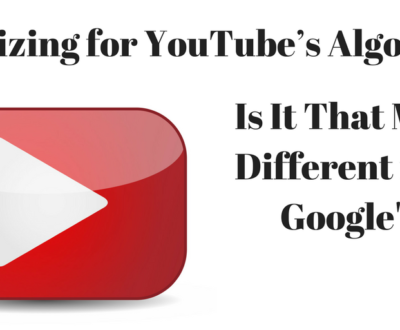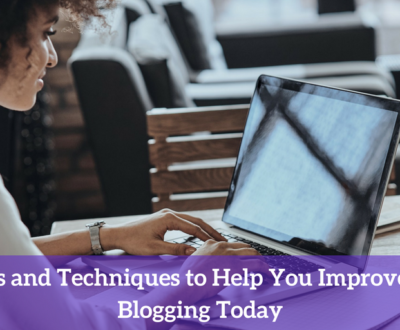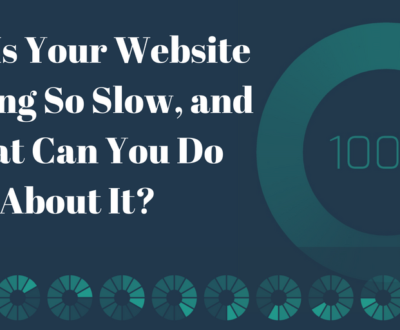
Originally Shared by MOZ.com | By: Ronell Smith
Email Marketing | Content | Copywriting

Are you ready to create emails that get replies? Well, it’s time to step away from the clickbait-y subject lines hawking insincere or insignificant promises, and instead deliver messages worthy of earning a response. Despite rumors to the contrary, asking for a reply or using email templates or sample letters is not the best path to ensuring your emails draw more than a yawn.
If the goal is to deliver emails that consistently get responses, your brand must first focus on being authentic, sincere, and empathetic, putting the needs of the person on the other side of the screen before those of your brand.
By doing so, you not only earn clicks, eyeballs, and responses, you can also increase the number of conversions for your product or services, which likely won’t go unnoticed.
For the skeptical among you, I’ll use a personal example, one that involved me sitting at my desk when my former vice president stormed out of the executive team meeting, yelling my name as he walked down the corridor toward my office.
“Ronell! Where’s Ronell?!” he implored as I stuck my head out my office door to greet him. “I need you to explain these numbers to me.”
I — lump in my throat — looked at a printout with budget numbers for my department.
“I cut your budget 30%, right?” he asked. “But [the revenue for your area] increased 17% over the same period. What did you do?”
Before I could say a word, he ran off to another meeting as I scrambled to respond.
At the time, I didn’t really have a solid answer.
But the more I looked into it myself, the more I realized that I had made a small change that had added up to make a huge difference: I focused intensely on building connections via email with my core clients.
Whereas many of my peers sent ho-hum, “How are you doing? We should talk soon”-type emails that got opened but seemed to never garner responses, I resorted to employing a system that was successful and trackable:
- Set aside 30 minutes a day for what I called “connectedness emails” — highlighting my knowledge of their new products or services, sharing my thoughts on them, and providing an informed opinion on how successful they were likely to be
- Sent a minimum of two emails
- Tied responses to future ad sales
What started out as a fun way to connect with my customers became a process I’ve continued to use for the better part of a decade, during which time I ran a members-only online newsletter that had email open rates averaging 47% (in a vertical where open rates averaged ~5%) and response rates averaging ~35%.

I’m sure many of you reading this could beat these numbers in your sleep.
My point is not to show you how lucky I was to have some success at email marketing over a short period of time. My point is that email outreach can be the powerful tool we view it as, if only we’re willing to revise our processes and focus on doing the things that earn meaningful responses, not merely clicks or opens.
Who cares about email, anyway?
Despite all of the attention and dollars thrown at social media, email is one of the most effective tools we have in our arsenal to successfully conduct outreach and build lasting connections.

But I’m sure you don’t need to be convinced, for you’re probably already sending emails more often than you’d care to remember.
What’s more, given the plentiful information on the email outreach, you’re probably wondering why you need to read another such post.
The answer: We can all be more effective at email, whether for marketing or for outreach. I’m of the opinion that the content marketing and SEO industries could be a lot more effective by placing as much emphasis on doing email better and more effectively as we do on social media. (I’m not talking resource allocation, mind you; I’m talking diligence and attentiveness.)
Before I share the simple but effective tactics I’ve used for the last decade, three housekeeping notes are in order:
- I’m not now, nor have I ever considered myself, an email expert.
- This post won’t cover, in any great detail, subject lines (e.g. length, words, etc.), open rates, optimal times to send emails, etc.
- Three things compelled me to write this post: (a) the prevalence of (often ineffective) email outreach; (b) the importance of email to SEOs and marketers in general; (c) and my desire to share a few simple elements I’ve used successfully for years.
How can your brand kick butt by creating emails that garner responses?
#1 -Tell me what’s in it for me
After the opening salutations, get right to the point. Show me you value my time and have used yours to identify my needs and how your brand can help me meet them.
The email below, which I recently received from GetStat, nails it:
- The subject line not only intrigued me, it made me want to see what they’d collected on my behalf
- The opening was brief and to the point
- The information they compiled is in line with why I would likely be reading and subscribing to their blog
- They were brief
- (I’ll cover the CTA below)

As you can see, any brand can create a similar email.
It all begins with having empathy for the person on the other end, clear brand goals and a willingness to respect people’s time.
#2 – Grab mobile readers’ attention with the first sentence
I have a confession: I don’t trust your subject line.
We’ve all become masters of the clickbait email subject line. If you’re going to get me to open your email, you’ll need to think different.
Like most of you, I open most emails on a mobile device.
To consistently get my attention on a smaller device, disregard the subject line and use the first sentence of the email, which is often shown via mobile.

Yes, this can mean your emails have my name in the first line. But for brands I recognize, I don’t need to know you realize who I am; I need to know what you’re sharing is of value to me right now.
This should be an easy sell for SEOs who always include keywords in the first few lines and sentences to of a message, be it a blog post or an email.
So, while you’re laboring over that catchy subject line, go ahead and peel off some time — and a few choice words — to include in the first sentence.
#3 – Mind your grammar
One of my first jobs out of college was a business writer for a newspaper.
The metro editor had a standing policy regarding email correspondence that got everyone’s attention:
- If you spelled his name wrong — no matter how great the pitch — he discarded it
- If you misspelled a word in the email, it met the same result.

In the years since, I’ve met many people who feel the same way.
Don’t focus on the message at the expense of respecting the person you’re contacting.
Take the time to figure out who you’re writing to. It might be a make or break.
#4 – Create & exhaust tension
If you’re really serious about wanting your email opened, show me that you can help me solve a problem you know I’m facing.
“I know you’re looking to…”
“Brands facing the challenge yours now faces…”
“Your content team is doing an excellent job, but are likely stretched thin…”
That’s when you step in with a worthwhile answer and can likely earn more than my attention.
The key is to show the individual reading your email that you feel her pain, have taken the time to find the solution, and, most important, you are the person to handle the job.
That’s how I got the newspaper gig, despite majoring in biology and having zero experience or training in journalism:

(This is not the actual email I sent, but it is similar.)
- I’d done my homework to know the issues the paper — and thus the editor — was facing.
- I knew he’d likely discount a non-journalism major, but I reasoned that he had stories he’d want covered — that is, he’d want to go down swinging.
- I wanted him to know I respected the business and the journalism, not simply the former.
I later learned that after reading my email, the executive editor said “Where did this guy come from?” He then set up a meeting with me.
I was hired the same day.
“Your email did it,” said my editor, months after I was hired, while admitting he was initially skeptical.
Your brand can achieve similar results. All it takes is a little investigation.
#5 – Have a well-defined call-to-action with clear next steps spelled out
One of my biggest weaknesses when I first started in content marketing was calls to action.
I’d write a blog post that simply ended.
There was no thoughts about intended next steps for the folks I was writing to.
Don’t be me.
At or near the end of every email you send, highlight, share, or link to the intended next step in the journey. (See the GetStat email above.)
#6 – End on a high note
A recent post regarding email outreach I wrote for Moz listed “thank you” as a better alternative to “thanks” as a closing.
Not so fast, says the latest research from Boomerang.

While “thanks” seems gratuitous to me, their research shows it as outperforming every other closing but “Thanks in advance.”
The main point I’m taking from this research is the need to test, test, test.
At the very least, start experimenting with various closings while keeping track of the responses.
Your results will likely vary.
Over to you
As you can see, none of the tips shared above is particle physics. They can be employed by anyone, at any brand and at any time.
I hope you’ll give at least a few of them a shot.
We all spend so much time and energy on email each day, it’s worth taking the time to figure out ways to better engage people through the medium.
Let us improve your online marketing results
We have increased traffic, leads, and sales for well-known companies—including Dell, Mrs. Fields Cookies, Hotels.com, and H&R Block.Plus for hundreds of local smaller companies like dentists, plumbers, dermatologists, etc.
About us and this blog
We are a full service agency that deliver compelling digital marketing solution. Our winning solutions and experience helps to deliver great results across several key areas.
Request a free quote
We offers professional SEO services that help websites increase organic search drastically and compete for 1st page rankings of highly competitive keywords.
Recent Posts
- HOW SEO IS LIKE BASEBALL September 10, 2022
- OPTIMIZING FOR YOUTUBE’S ALGORITHM: IS IT THAT MUCH DIFFERENT FROM GOOGLE’S? August 17, 2022
- 5 TOOLS AND TECHNIQUES TO HELP YOU IMPROVE YOUR BLOGGING TODAY July 19, 2022







